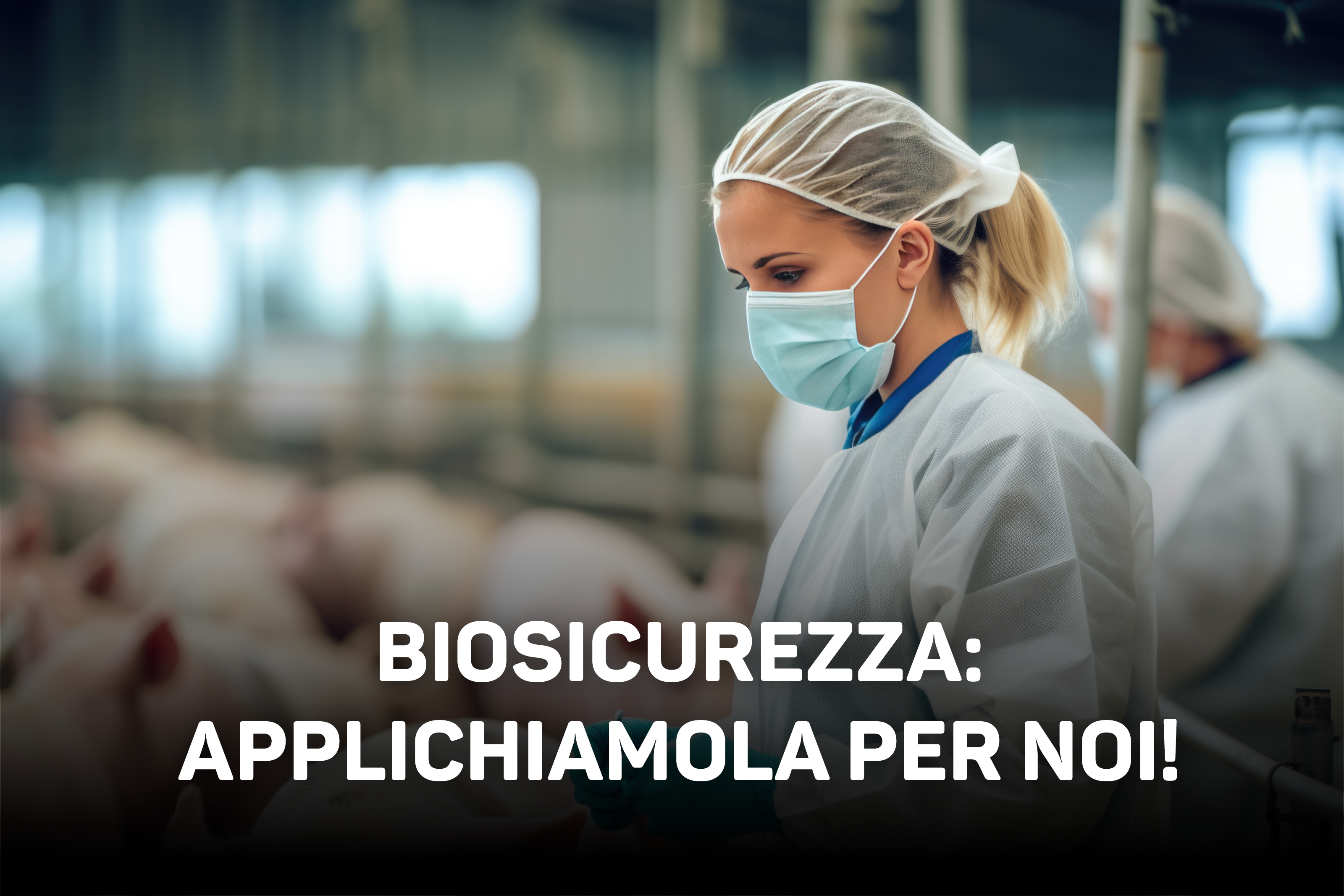
Biosafety: Let’s apply it for ourselves!
In recent times, thanks to the ASF (African Swine Fever), there has been a lot of talk about biosafety, and we have had to quickly take action regarding specific requests from Veterinary Authorities regarding external biosafety measures (fencing, buffer zones, cleaning and disinfection of incoming vehicles, etc.).
Perhaps now is the time to focus on internal biosafety and endemic diseases in our farms. These diseases have never left us, and despite all our efforts to reduce the risk of ASF entering the farm, they don’t seem to be less common than before.
What does this tell us? The external biosafety measures we have adopted for ASF do not affect the circulation of pathogens already present within the farm, and they are not always effective in keeping diseases that differ, at least in part, from ASF, out of the farm when it comes to their mode of transmission from one pig farm to another.
So, let’s talk about internal biosafety, not only in terms of correct cleaning and disinfection procedures but also as tailor-made protocols for the diseases already present and the structure of each farm.
An example of a biosafety and management program tailored to combat PRRS is the so-called “McREBEL PRRS Procedure.” Twenty-five years ago, Monte B. McCaw, a professional and researcher at North Carolina University, published the first internal biosafety procedure to try to control Porcine Reproductive and Respiratory Syndrome (PRRS). To address this problem, McCaw outlined a risk management protocol with a series of key actions that were immediately successful in reducing pre-weaning mortality in farms experiencing losses due to an acute PRRS epidemic. It also brought benefits to farms with endemic PRRS.
He called that procedure “Management Changes to Reduce Exposure to Bacteria to Eliminate Losses from PRRS,” with the acronym “McREBEL PRRS.” Below are his original recommendations published in 1995, which are still very relevant today:
- Ceasing cross-fostering of piglets among litters, done to save sick, lagging, and/or small piglets.
Cross-fostering to equalize the number of piglets per litter can be done within the first 24 hours after birth.
Moving piglets only as indicated above and only within the same farrowing room. Do not move sows or piglets between different farrowing rooms.
Discontinuing the use of nurse sows to nurse weak piglets due to PRRS infection, lagging, and/or small size.
Minimizing piglet handling from birth to weaning, reducing the number of procedures as much as possible, and consolidating them.
Evaluating the effect on the risk of PRRS or other diseases appearing and spreading from each non-essential operation performed on piglets in the farrowing room (or in the weaning area).
Euthanizing and immediately disposing of the carcasses of severely ill piglets that are unlikely to fully recover.
NOT retaining lightweight or cull piglets in the farrowing room and NOT moving them backward, but disposing of them or keeping them in the flow of animals of their age group if they are considered easily salvageable.
IMMEDIATELY STOPPING all “Feed Back” operations, which involve feeding weak piglets/stillborn or aborted fetuses to incoming pregnant sows, and potentially even to pregnant sows. - Strictly implementing TPTV (All-In, All-Out) in the weaning section, allowing at least 2-3 days for cleaning and disinfection between groups.
If necessary, the All-In of the weaning section can also be done by weaning some of the older and better litters from the farrowing room following the one that is currently being emptied at that time.
This control procedure treated litter as a unit and encouraged farmers to move piglets in groups from the same litter to the weaning pen. The “McREBEL PRRS Procedure” was indeed able to reduce viral transmission at the farrowing room level, and the subsequent decrease in secondary bacterial infections in the weaning section became evident 12 weeks after the program’s initiation. Since then, biosafety experts, veterinarians, and pig farmers have introduced some changes (e.g., now it’s recommended to cross-foster within a maximum of 4 days rather than 24 hours, both for convenience and to ensure good colostrum intake for piglets), but many recommendations are still valid.
In the next article, we will explore more internal biosafety measures, the application of which reduces the severity of endemic infections and the risk of spreading infections within the farm that, unfortunately, may have managed to surpass the “strengthened” external biosafety measures.
Do you want to learn about our biosafety programs? Send an email to info@maberth.it or info@pitpharm.it, or visit our website at www.pitpharm.it
